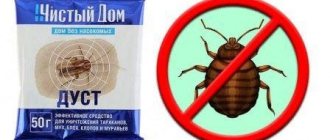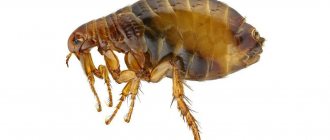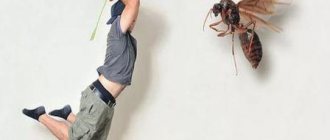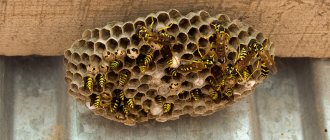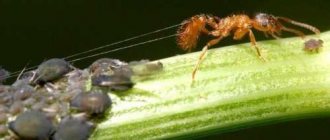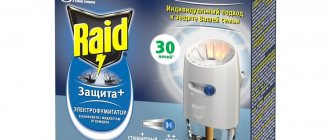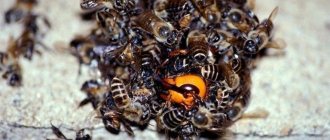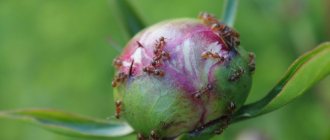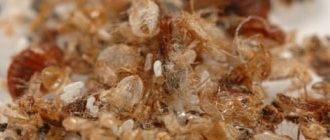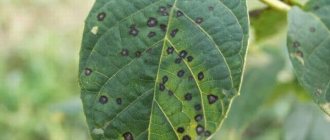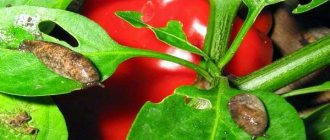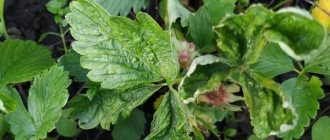Slugs are the misfortune of any gardener. In simple terms, these are snails without a shell. Their main means of defense is mucus. It protects from environmental influences and helps with movement. They are omnivores. Moreover, their gluttony allows them to be identified as one of the most dangerous pests. When they eat plants, they leave behind gnawed holes and traces of mucus. During periods of drought, they practically do not appear, but with the arrival of rains there are a lot of them. The period of activity is night; during the day they hide from the sun in secluded corners. A large number of slugs can damage an entire garden, spoil many plants, and spread diseases throughout the garden. Let's figure out how to get rid of slugs.
There are the following types of gastropod pests:
- slugs - they do not have a shell, it was lost in the process of evolution;
- semi-slugs - they have a rudimentary shell;
- snails have a regular shell.
All species are pests, but the most harmful are shellless snails.
Slug eater
This is a means to combat slugs in the garden where vegetables, berries, fruits and other crops grow. The insecticide interacts with mollusks upon contact with the skin, as well as when the snail eats the treated crop. Does not harm plants if the dosage is observed.
| Options | Description |
| Advantages |
|
| Flaws |
|
| How to cook | The packaging is opened at the time of use, after which the granules are distributed evenly between crops, in furrows, along paths. |
| What pests does it affect? | Snails, slugs, woodlice. |
| Consumption per area | 30 g – 10 sq. meters. |
| Price | 300 g – 200 rub. |
Pest control on cabbage
Of all the vegetables in the garden, cabbage is especially loved by slugs . Its juicy, tender leaves are the best delicacy for pests, and very often they destroy the entire crop on the site.
It is highly undesirable to use chemicals on cabbage, especially since there are many effective and affordable folk remedies.
Spraying
Experienced gardeners recommend spraying cabbage with hot water. This vegetable can withstand temperatures up to 60 degrees without consequences, while slugs die already at 40 degrees .
If pests are visible between the leaves on the heads of cabbage, you need to heat the water to 40-45 degrees and thoroughly spray the plants.
The treatment should not be long so that burns do not remain on the leaves. Dead shellfish must be manually selected from the sheets after a hot shower.
Instant coffee helps get rid of slugs well. Upon contact with caffeine, large individuals lose activity and orientation, and small ones die.
To spray, just dissolve a double portion of coffee powder or granules in a glass of water, and then treat the cabbage. Having smelled the smell, slugs will avoid cabbage beds , but coffee does not harm the plants.
Pests also do not like the smell of wormwood, tobacco, marigolds, and walnut leaves. They need to be brewed in boiling water, left for 2-3 hours, then the cabbage should be treated with strained and cooled infusion.
Occasionally, you can use a weak saline solution (100 g per bucket of water) or a solution of ammonia in a ratio of 1:6.
Traps
During the day, slugs always hide from the heat in thick grass, under stones, and in compost heaps. You can make your own slug traps. To do this, you will need available materials : old boards, pieces of slate, burlap, roofing felt and other rubbish.
Having chosen a convenient open place, you should water it thoroughly and lay any material on top . Burlap and rags must be additionally moistened with water.
In a day or two, slugs will gather under the shelter; they should be collected and taken away from the site , and the shelter should be left for the next batch. See the photo below for what a slug trap looks like.
A good trap can be made from an ordinary plastic bottle. The bottle is crushed on the sides so that it does not roll on the ground, a little fruit juice, honey or beer is poured inside , and laid flat between the cabbage beds.
You can press it down on top with a flat stone or board, fixing it in one position. Slugs will definitely smell the smell and get into the bottle , but it will be difficult for them to get back out.
Once every 2 days you need to check the traps, remove any pests and add juice.
Lures
Another way to catch slugs is to place bait in the area . Grapefruit, orange or watermelon peels are used as bait ; To do this, they are cut in half, the pulp is selected, and a small hole is cut in the center of the peel.
The resulting cups are placed cut side down on the beds in the evening; Attracted by the aroma, the slugs crawl under the skin and remain there until the morning. After this, all that remains is to check all the baits and collect shellfish .
Thunderstorm (Meta)
"Thunderstorm" is an effective drug against slugs and snails. It is used for processing vegetable, berry, fruit and flower crops, including grapes. A blue insecticide containing metaldehyde and additives to attract the attention of shellfish and repel birds.
| Options | Description |
| Advantages |
|
| Flaws |
|
| How to cook | After opening the package, distribute the granules between the rows. |
| What pests does it affect? | Shellfish. |
| Consumption per area | 15 g – 5 sq. m. |
| Price | 60 g – 60 rub. |
Metaldehyde
The slug repellent is produced in cylindrical granules in blue, green, and pink colors. Each particle includes 5% metaldehyde, kaolin and other additives. Does not dissolve in water. Impact – contact, intestinal.
| Options | Description |
| Advantages |
|
| Flaws |
|
| How to cook | Open the package and distribute the granules around the plants. |
| What pests does it affect? | All types of garden slugs. |
| Consumption per area | 4 g – 1 sq. m. |
| Price | 15 g – 15-20 rub. |
Recommendations
- Thin your plantings regularly
- Plow and remove weeds regularly
- Do not leave rotting tops and weeds on the site
- mint, garlic, chicory, lavender, parsley, and mustard around and nearby . Slugs don't like the smell of these plants
- Motivate birds by hanging feeders. Birds will peck slugs
- It’s great if the area is visited by hedgehogs and frogs . They eat slugs
Ferramol biological slug repellent
Slug poison in granular form, including iron phosphate. This makes it harmless to humans and pets and does not harm the soil. Effectively combats the problem even during rain.
| Options | Description |
| Advantages |
|
| Flaws |
|
| How to cook | Sprinkle the product over the beds or between the rows. |
| What pests does it affect? | Slugs. |
| Consumption per area | 5 g – 1 sq. m. |
| Price | 1250 rub. – 200 g. |
Relatives of snails
As a type of gastropod, naked slugs, related to snails, lost their shell houses during the course of evolution. Unlike aquatic mollusks, these live on land. In the Russian climate, especially in regions of moderate temperatures and sufficient humidity, gastropod pests of vegetable gardens do well.
They are found everywhere and are easily recognizable by their resemblance to snails and the absence of a shell. The soft and slippery bodies of slugs are spindle-shaped and up to 7 centimeters long. They are completely covered in protective mucus, which aids in movement. This substance secreted by the wrinkled skin also protects the slugs from drying out.
Structure of slugs
The head of the mollusk is fused with the foot-sole. The front part of the body ends with two pairs of tentacles, which can extend if necessary. The lower one serves as tactile organs; the upper one contains the eyes of the mollusk. The lip ridge surrounds the mouth opening, hiding the feeding devices.
The tongue, resembling a grater, equipped with chitinous serrations, serves to grab food, which is ground with the help of a paired horny plate. The back is covered with a mantle, which ends with the remains of a shell transformed into a plate, covering the anus and genitals of the slug.
A respiratory opening can be observed on the right side of the mantle. The color depends on the species, but most often it is a discreet gray-brown with black specks. Orange and light gray colors are rare.
Features of reproduction
As natural hermaphrodites, slugs reproduce even when isolated from other members of their species. The ability to self-fertilize can persist for several generations. But, since these creatures always have a pair in the garden, cross-fertilization remains the main method of reproduction.
Slugs hide clutches of translucent eggs from the sun in the soil under the roots of plants at a depth of up to 8 cm. There are up to 200 eggs in a clutch. After 5 weeks, tiny copies of slugs emerge from them. In 2 months they grow up and begin to produce offspring themselves. The eggs can overwinter in the ground, then new slugs will hatch from them in late spring or early summer. Both adult individuals and young animals emerging from eggs in the fall overwinter.
What is the harm from shellfish?
Over the two years of existence, each individual manages to do a lot of damage to garden crops. Distinguished by their omnivorous nature, slugs gnaw holes in juicy fruits, make holes in leaves and heads of cabbage, and spoil tubers, revealing their presence with sinuous lines drawn by dried mucus shining like mother-of-pearl.
Crawling and devouring cabbage and lettuce leaves, tomatoes and cucumbers, strawberries on their way, showing interest in flowers and ornamental crops, slugs simultaneously spread fungal plant diseases and parasite eggs, for which they act as intermediate hosts. When they eat cultivated plants, domestic animals become infected with helminthiases.
Favorable conditions
These pests are especially active at night and on cloudy days. They are favored by moderately warm temperatures around 22 degrees and high humidity in the air and soil. Long rainy periods, coinciding with oviposition and the growth of spring young animals, contribute to a noticeable increase in the number of pests.
Two rainy summers in a row produce so many slugs that it is impossible to walk through the beds without stepping on them. From the summer heat, slugs hide in the shade of the dense foliage of garden plants. Or they crawl under natural shelters and damp places and lie there until the evening. Their greatest gluttony coincides with the stages of intensive growth and reproduction.
Natural enemies of mollusks
In nature and in gardens, slugs are readily eaten by a variety of large insects, toads, birds and even mammals. This fact should be taken into account when choosing methods to combat these pests. In addition, there are many drugs for exterminating gastropods and repelling folk methods. They can be expelled from the beds using improvised means and caught mechanically.
Significantly reduce the number of pests using preventive measures:
- Cleaning compost heaps and last year's plant residues away from the beds.
- Autumn digging of the soil destroys the eggs laid by slugs.
- Timely removal of construction debris and stones from the site.
- By tearing off the lower leaves of plants.
- Using pine needles as mulch.
- Sprinkling row spacing with pine sawdust.
- Avoiding dense plantings and placing seedlings with strict adherence to the recommended distance between bushes of 30 to 50 cm.
Necessary measures to attract starlings and rooks, jays and jackdaws, which happily catch and eat slugs, can be the installation of birdhouses and feeders in the garden. Hedgehogs, which also eat slugs, can be attracted by leaving treats for them in the form of dry dog food. For frogs, make a small pond in the garden using an old bathtub filled with water.
Predator
The gardener's effective fight against slugs will be crowned with success when using the Predator insecticide. The drug contains metaldehyde, which interacts with shellfish by contact and when swallowed. Used to protect all types of crops.
| Options | Description |
| Advantages |
|
| Flaws |
|
| How to cook | Use bait substrates or scatter along the beds. |
| What pests does it affect? | Gastropods. |
| Consumption per area | 7 g – 10 sq. m. |
| Price | 95 g – 100 rub. |
Mechanical methods
This category includes manual collection of pests, traps, and the creation of physical obstacles or discomfort.
Pros:
Minuses:
Traps
Slugs have a good sense of smell, so instead of inspecting every bush, you can collect them in one place. For this purpose, simple traps are made - with their help, mollusks can be destroyed “in bulk.”
Beer slug trap.
If picking up slugs by hand is a nuisance, simply sprinkle soda ash on the clumps. Under the influence of the powder they will die in a matter of minutes.
You should not pick up slugs with your bare hands. The pests carry E. coli and are covered in a sticky substance that is difficult to wash off the skin.
Manual collection
Shellfish are collected early in the morning, when they have not yet had time to climb into shelters. Most often they hide under the shade of plants, in damp corners, on the back of leaves. After the “harvest” is collected, the captured parasites should be destroyed.
Creating discomfort
The body of slugs has no protection, so any aggressive impact causes them serious discomfort.
Considering this feature, to combat mollusks you can use:
Vegetation barrier
Slugs are very sensitive not only to physical influences, but also to intense aromas.
The following plants are used to repel shellfish:
They are planted next to vegetable crops, creating a natural barrier. You can go the other way - plant rapeseed in a greenhouse, which slugs really love. They will leave vegetables and fruits alone, switching to their favorite treat.
Lifehack from an expert
Slugs are a favorite treat of frogs and toads. Accordingly, to destroy parasites, you can gather a small “army” of amphibians, and then release them in a greenhouse.
Slug Patrol
The insecticidal drug is used to effectively control pests (snails, slugs) that destroy crops of vegetables, fruits, and flowers. Metaldehyde is the main killer of shellfish repellents. Contacting the drug, the snail gets burned and dies from dehydration.
| Options | Description |
| Advantages |
|
| Flaws |
|
| How to cook | Place the drug where traces of pests are found. |
| What pests does it affect? | Snails, slugs. |
| Consumption per area | 30 g – 10 sq. m. |
| Price | 50-70 rub. |
Hunter Natural Slug Granules
A safe remedy for humans and plants to combat slugs in the garden - Hunter. It has the form of microgranules, which are simple and convenient to use. The natural components included in the composition will not harm the plants.
| Options | Description |
| Advantages |
|
| Flaws |
|
| How to cook | The granules are scattered between the beds. |
| What pests does it affect? | Snails, slugs. |
| Consumption per area | 5 g – 1 sq. m. |
| Price | 700 g – 1000 rub. |
When should you start fighting?
Since slugs are an integral part of the food chain, the fight against them must begin when significant damage is caused to plantings. The damage caused to plants depends on the period of activity and reproduction of slugs. Thus, in the dry season, they hide almost all the time in moist soil and become lethargic and inactive. In addition, not everyone is able to survive the drought; many will die.
You can start removing slugs based on weather conditions and time of year:
- activity and gluttony increase in cool and humid weather - this is an ideal environment for them;
- individuals live from one to three years. In summer, eggs are laid, from approximately 10 to 500 eggs, depending on the favorable environment. Young offspring appear after two to three weeks. Thus, at the end of summer there are many times more pests. Plus, with the beginning of autumn and the onset of cool, wet weather, their activity increases significantly.
Stopulit
An effective contact-intestinal type drug against snails and other mollusks. Due to the properties of the insecticide, the mucous membranes of the pest are damaged, which leads to its death.
| Options | Description |
| Advantages |
|
| Flaws |
|
| How to cook | Distribute the product evenly along the beds like a barrier or use bait areas. |
| What pests does it affect? | Snails, slugs. |
| Consumption per area | 3.5 g – 5 sq. m. |
| Price | 15 rub. – 3.5 g. |
How to get rid of slugs forever
Having studied the lifestyle and preferences of pests, you can choose effective methods to prevent their occurrence, significantly reduce their numbers and completely destroy them.
Methods of destruction are divided into:
- traditional methods;
- natural;
- chemical.
Chemical methods are used only as a last resort, if folk and natural methods do not help.
Cleaning the area from weeds
It is necessary to properly and regularly weed and paint plantings and beds, remove weeds, debris, and plant debris. Particular attention should be paid to places near greenhouses and greenhouses. This method will help improve ventilation between vegetation and reduce moisture, which is an unfavorable environment for slugs. It is also necessary to remove their possible hiding places - stones, boards, stumps.
Do not over-water the plantings
Slugs accumulate in moist places. Abundant watering of the beds leads to increased humidity. It is in this place that pests will accumulate. Plants that are overwatered may begin to rot, which will also attract slugs.
Sprinkling paths and row spacing in the evening
Iron sulfate 10g/sq. m, superphosphate 5-8 g/sq. m, a mixture of slaked lime and tobacco dust 1:1 (30 g/sq. m), or a mixture of ash and bleach (30-40 g/sq. m). An effective folk method of sprinkling is with dried mustard, slaked lime or wood ash. These substances deoxidize the soil and make it unsuitable for slugs.
You can sprinkle a dense layer of paths and row spacing with sawdust, spruce branches, and sand. Pests will not be able to crawl on these materials.
Planting repellent plants
You can plant plants that are unpleasant for snails. So, they will avoid places where they grow. These plants can be planted around the perimeter of the beds, like a kind of fence.
These include:
- mustard;
- sagebrush;
- onion;
- thyme;
- garlic.
Setting traps
You can build traps with or without bait.
Do not water one area with water for a week. Then water generously and place wet rags, tree bark, plant leaves - they will serve as houses. Traps are placed at a distance of 3-5 centimeters from each other. Every day in the late afternoon they clean up and gather slugs. It is important to move the traps to new locations after each assembly.
In addition to moist soil, vegetables such as beets, cabbage, and carrots can be bait. The most unusual, but effective option is to use beer. The fact is that snails are attracted by its smell. Beer containers are buried up to the neck in the ground. It is better to use large containers so that the slugs drown in them.
Spraying plants with caustic solutions
In this case, a salt solution is suitable. It is better to use crystallized salt, because... it is more caustic, but the cooked version is also suitable. Saline solution has a detrimental effect on plants, so it is better to spray in small doses that are safe for plants and harmful to slugs. This method is ideal for processing compost heaps. Rotting plant remains are one of the most favorite places for pests. By spraying traces of mucus with a saline solution, you can immediately get rid of uninvited guests. It is important to spray in dry weather after sunset to prevent the salt from dissolving in the moisture.
Soda against slugs
It is better to use soda ash rather than baking soda. It is necessary to pour a thick layer of soda into areas where slugs are concentrated. Under the influence of the substance they die literally before our eyes.
Using corn flour.
This is a favorite and at the same time deadly food for snails. Corn flour is poured into a jar and left overnight on the site. In the morning, dead pests are collected and thrown as far from the site as possible.
Herbicides
These are chemicals used to remove plants and slugs.
- Preparations based on the active substance - iron phosphate. It kills snails quickly, is non-toxic to the soil and decomposes quickly.
- Carbonate pesticides. This product in the form of granules is scattered over the area and lures slugs with its smell. The action is aimed at blocking the mucous glands. By eating the granules, mucus, the snail’s main defense, stops secreting, resulting in death.
- Metaldehyde-based products. They are also available in granule form. Their validity period is at least 20 days.
Biological methods
This method is suitable for those who want to get rid of pests without doing anything. All that is required is to let the other animals do their job. Many animals, birds, and insects feed on these mollusks, for example, lizards, toads, frogs, hedgehogs, thrushes, and jays. Predatory beetles eat slug eggs
Everyone knows this rule: “it’s easier to prevent than to get rid of it.” There are many ways to minimize shellfish:
- Clean area. This means removing weeds, thickets, and debris.
- Treatment with agrotechnical means. They improve the soil structure and enrich it with oxygen, which is absolutely not suitable for snails. Pests are repelled by loosening the soil on a hot sunny day. Dry soil kills eggs and young slugs.
- Introduce slug-eating animals and insects into the garden.
- Order in the area. This means not only removing weeds, but also various rags and boards - ideal hiding places for slugs.
- Fencing beds with a protective surface. For fencing, the following are used: eggshells, sawdust, pine needles, crushed stone, lime, sand. The structure of these substances does not allow slugs to move along it; accordingly, they will not be able to overcome the protective surface.
- Compost heaps. This method works if one of the previous ones is followed. Rotting plants attract slugs and are an ideal habitat - there is food, moisture, protection from sunlight. Such a pile will collect almost all the pests from the site. You can get rid of them if you wish. It’s easier to do this in one place, rather than throughout the entire area.
- Installation of a drainage system. It will help remove excess moisture from the area.
Preventative work is not particularly difficult. The regularity and timeliness of their implementation is important here for high-quality prevention of molluscs.
Superphosphate
Phosphorus is an important element for the proper and complete development of plants and plantings. Fertilizer not only has a positive effect on the crops grown, but also effectively fights pests.
| Options | Description |
| Advantages |
|
| Flaws |
|
| How to cook |
|
| What pests does it affect? | Snails, slugs. |
| Consumption per area | 80-100 g – 1 sq. m. |
| Price | 50 rub. - 1 kg. |
►FIGHT MUGES!!! HOW TO PROTECT LANDINGS!
Reviews:
Valery Korobkas
writes: Buy a large pack of mustard, or two, and spread a thick border of 3 or 4 centimeters on the ground around the perimeter of your garden. That's all! In your garden you will collect everything, and strangers will not crawl to you! I do it once in the spring and that’s it, no need to spray or poison anything. But don’t breed them yourself; I never mulch anything.
Nadezhda Zilinskaya
writes: I love rural robots, I can’t tear myself away
Olga Cozy corner
writes: Tanya, thanks for the information. I also bought mustard for slugs and will use it.
Logos
writes: pour beer into a container and leave for several days. We arrive in the morning and the container is chock full of slugs. Soda also attracts slugs well. works flawlessly. It works well in my area. must be combined with mustard. the effect will be better.
Elena Pivneva
writes: okay, thanks Tatyana, I’ll know
The greenhouse must be one hundred percent well lit and ventilated. Air or stuffiness should not accumulate in any of the zones. Therefore, between all the plants there should be little space for good airflow. This must be taken into account when planting, because the density of grown plants will not only lead to the emergence of pests, namely slugs, but will also cause certain diseases.
It is absolutely necessary to ensure that the humidity in the greenhouse does not increase, as this mainly provokes the appearance of slugs. Therefore, water the plants correctly and do not let them rot from the water. The cold can also lead to slugs.
Bros
Waterproof insecticide against snails. It starts working a few hours after use. The activity of the product remains for 3 months from the date of application.
| Options | Description |
| Advantages |
|
| Flaws |
|
| How to cook | The preparation is sprinkled on the localization areas of pests. Avoid contact with plants. |
| What pests does it affect? | Snails and slugs. |
| Consumption per area | 0.4-0.8 g – 1 sq. m. |
| Price | 700 rub. |
How to understand that pepper in a greenhouse is affected by slugs
Not everyone sees this as a problem. The clumsy mollusk does not inspire much fear. However, the slug will soon show what it is capable of: although its jaws are rather weak, it has an excellent appetite, and it eats everything that comes its way . It is difficult to detect pests during the day: they hide in dark and damp places, and at night they come out in search of food.
By the nature of the damage on the leaves (holes) and traces of mucus next to the plants, you will understand that the pepper is in danger.
Damage caused
What terrible thing will happen to the plantings if the slugs gnaw a little on the foliage ? This is what inexperienced gardeners usually think. Let us hasten to dispel their misconceptions:
Anti-slug
A preparation to combat slugs, snails and other mollusks of this type. The granular shape allows you to easily treat the desired areas. Suitable for beds, basements, cellars.
| Options | Description |
| Advantages |
|
| Flaws |
|
| How to cook | The molluscicide needs to be scattered over pest population areas, paths, and row spacing. |
| What pests does it affect? | Snails, slugs. |
| Consumption per area | 20 g – 10 sq. m. |
| Price | 20 rub. – 20 g. |
What are slugs afraid of in the garden?
Agronomists say that what slugs are most afraid of is salt and various spices. Therefore, it is advisable to sprinkle potassium salt, tobacco, and hot pepper over the area against them.
You can immediately prepare a mixture of red pepper, salt and ash: this mixture must be sprinkled on the ground over the entire area. Mulching the soil with sand, peat and wood ash also helps.
The delicate body of slugs is extremely intolerant of sharp edges, so experienced gardeners sprinkle the soil with nut or egg shells, but small stones also help. Sawdust can also be used for this purpose.
Ecokiller for slugs and snails
Insecticidal preparation of contact action. To destroy a pest, particles of the product only need to get on its outer coverings. Non-toxic, does not emit harmful substances into the atmosphere.
| Options | Description |
| Advantages |
|
| Flaws |
|
| How to cook | Ecokiller is applied in pest habitats. |
| What pests does it affect? | Slugs and snails. |
| Consumption per area | 10 g – 1 sq. m. |
| Price | 500-600 rub. – 400 g. |
The main reasons for the appearance
It is almost impossible to detect slugs. During the day they hide in damp soil, where they are difficult to notice due to their color, and at night they come out. You can find out the approximate amount on the site thanks to the traces of mucus left on the paths and soil. It's best to check in the morning before the marks are dry.
You can suspect the presence of these pests on the site based on the following signs:
- holes of uneven shape on plants, while large veins are intact;
- complete destruction of berries or large holes in them;
- lack of mature seeds;
- characteristic traces of mucus on the surface of the earth.
In the wild, slugs maintain ecological balance. They eat weed sprouts, clearing the ground. They themselves serve as food for many forest inhabitants, such as hedgehogs.
Pest invasion may be associated with weather conditions favorable for reproduction:
- warm and humid spring or autumn;
- warm winter;
- rainy summer.
They can also enter an area with contaminated plants or soil. Therefore, you need to carefully approach the purchase of raw materials for the site.
Ulicide
The basis of the molluscicide is iron phosphate, which ensures effective destruction of pests through dehydration. Used in organic gardening. The drug is safe for people and pets.
| Options | Description |
| Advantages |
|
| Flaws |
|
| How to cook | Sprinkle the preparation over the beds and between the rows. |
| What pests does it affect? | Slugs, snails. |
| Consumption per area | 3-5 g – 1 sq. m. |
| Price | 500 rub. – 500 g. |
Agrosin
An agricultural soil conditioner that helps improve productivity and growth of planted crops. "Agrozin" catalyzes the activity of aerobic soil bacteria and fights pests.
| Options | Description |
| Advantages |
|
| Flaws |
|
| How to cook | Dilute in a ratio of 1:1000 with water. |
| What pests does it affect? | Shellfish |
| Consumption per area | 440 ml – 10 acres |
| Price | 300 rub. – 90 ml. |
